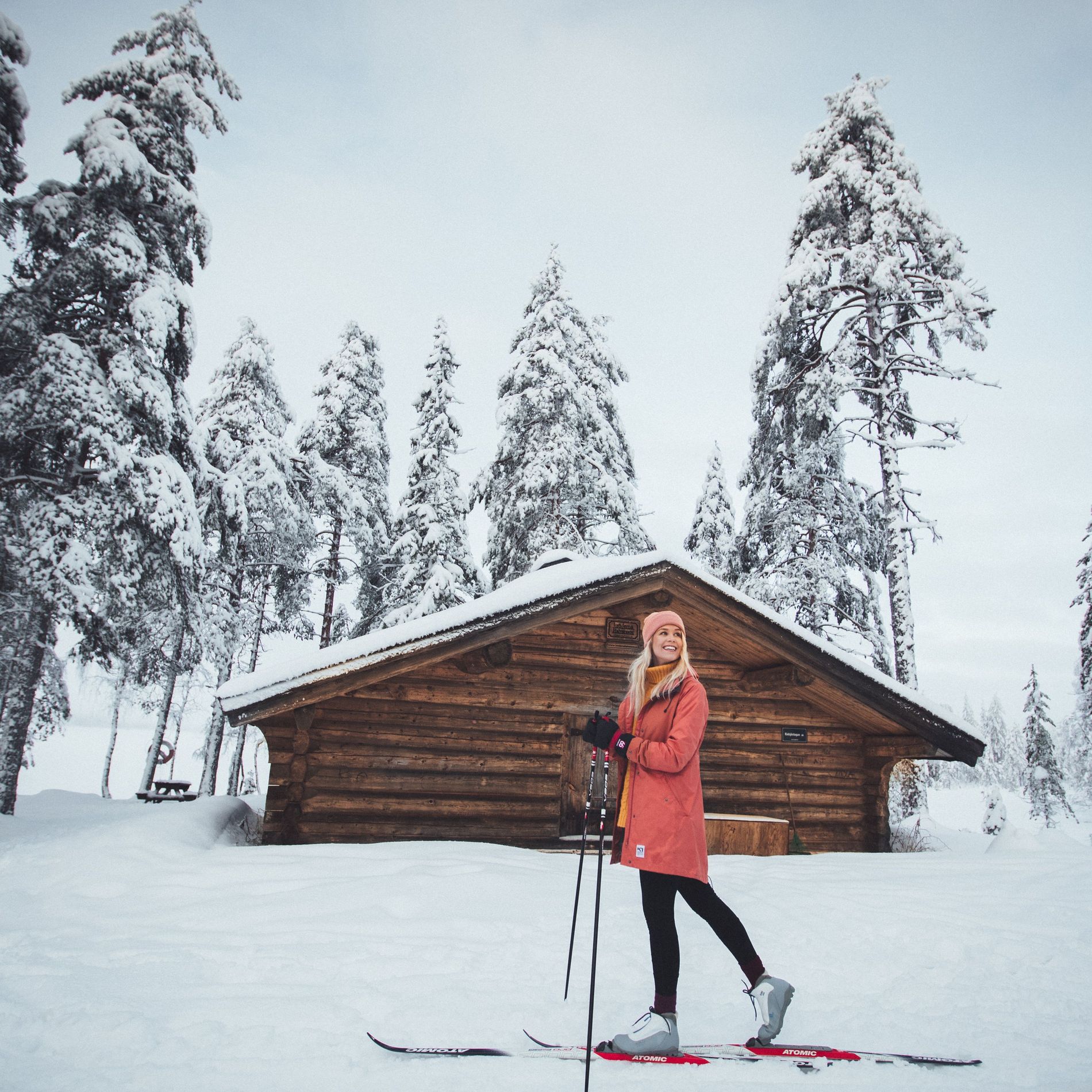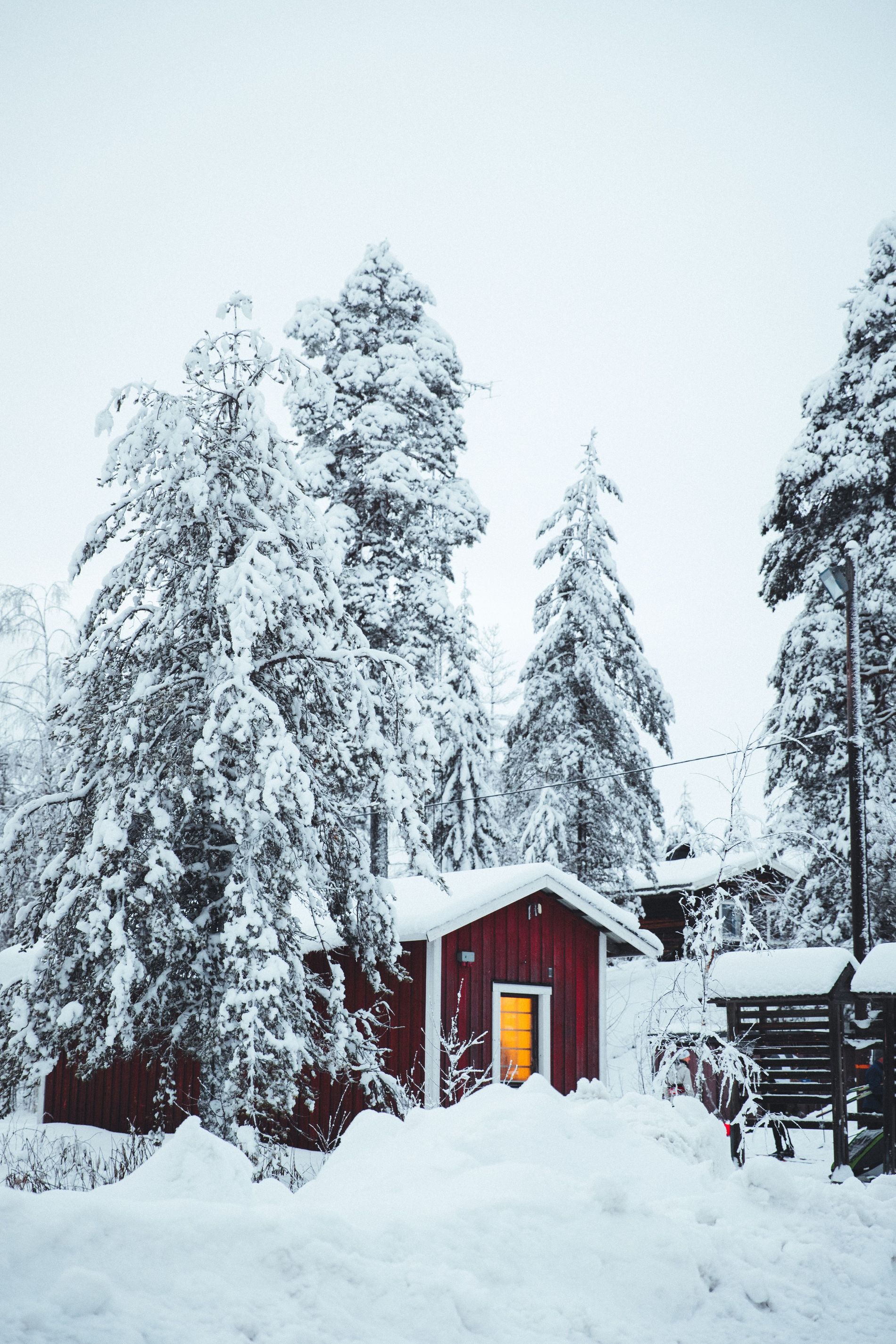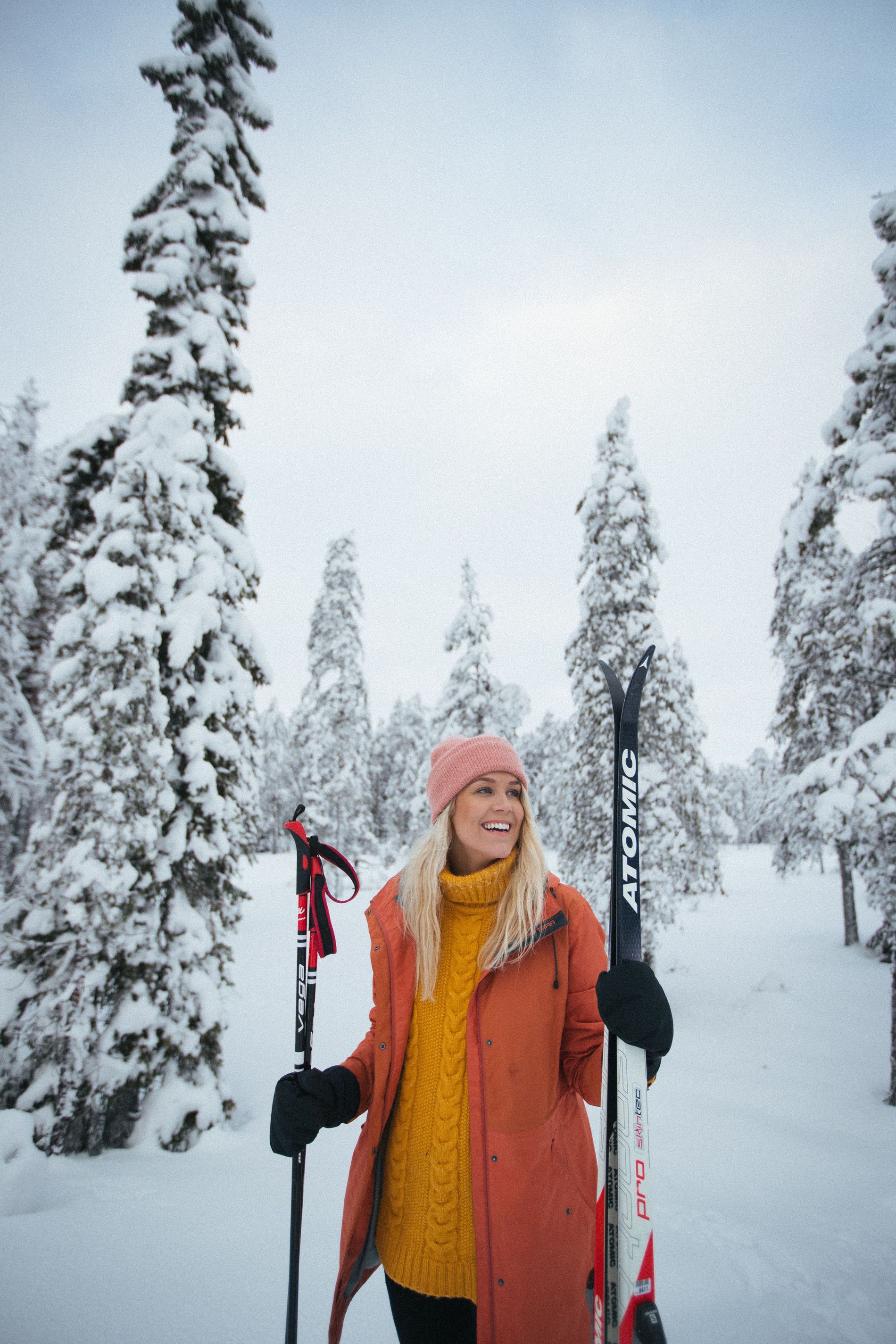Settle into cross-country skiing with Vogue Scandinavia's ultimate guide. Learn where to go, what gear to bring and how to master the techniques that make Nordic winters truly unforgettable
For a long time, cross-country skiing to me meant tight clothing, yellow sunglasses and 90 kilometres of pain and blisters. Usually watched from the comfort of home, tucked into the couch with either international competitions or the ever esteemed Vasaloppet flickering in the background, the activity is a national treasure in the Nordics. A sport we revere when the winter Olympics rolls around.
That is until I tried it out myself. What we see on TV is far from that magical feeling of gliding through densely packed snow in a fairytale forest on a cold winter's day. It's magical, really, and a sensation almost impossible to describe.
Just like any winter sport, it can be difficult to get into. Equipment, the ultimate conditions, and the pure athleticism required are all daunting. But just like with everything, it's all about taking that first step out onto the crunchy snow. Here’s how get into it:

Photo: Àsa Steinars
Where to go for the best cross-country skiing experience
To enjoy the sport properly, it's all about nature; the crisp tracks cut for convenience, heavy snow weighing down densely packed pine tree branches, and – of course – the waffle hut at the end of the trek. When planning your cross-country trip, we suggest looking into locations around the Nordics specialised in the sport. Some of the best tracks can be found in Finnish Lapland on the edges of Russia, where you ski across untouched heathland, across frozen lakes and through primeval forests.
Norway is the birthplace of cross-country skiing. The 70km Peer Gynt Trail is a wild, winter wonderland, as is the Espedalen Valley, and the never ending Rondane and Jotunheimen National Parks. Then there's Orsa Grönklitt, Sweden [as depicted here], with it's many beginner-friendly field trips.
What equipment do you need for cross-country skiing?
As with every winter sport, you need the right equipment to start. The first thing to consider is the length of your skis. Longer skis tend to be faster than shorter ones. So if you find yourself between sizes, think about your skiing ability. If you’ve never skied before, then choose the shorter ski size to give you better control and keep your speed down a bit.
Best way is to rent, then you know you’ll get the right skis for you. Because the length and stiffness of the skis are important, they have to fit your weight and the poles need to fit your height. You’ll also want warm but breathable clothes, like wool thermals and a gore-tex jacket.


Get proper guidance
There’s no need to make cross-country skiing into a competition, leave that to the professionals. Instead, find your pace and have fun with it. However, an important thing to note is that cross country do require a certain bit of technique for you to enjoy it.
When you’re ready to hit the tracks. At the trailhead you can usually find out the difficulty of each track. Pick one that is relatively flat to start with, hills can be difficult, and probably not longer than 5km. We highly suggest getting a teacher on day one. It will massively speed up your learning curve.
Mastering the proper technique
If you're daring enough to dart into the forest without an introduction, there are some things to make note of.
There’s two basic techniques to get going, the traditional diagonal stride where you use one leg and the opposite arm at the same time, or simply using only poles and both at the same time. For this, you lock your elbows at roughly 90 degrees, put the poles in just in front of your toes and use your core to drive forward.
A really good exercise to find your balance and grip under the centre of the ski is to drop the poles and only move forward by kicking and gliding. This will prepare you for the uphills, here your grip is essential to not slide backwards. And then in the downhill, just hold on tight and stay in the tracks. It might feel fast but in the end, the snow is soft so don’t be afraid of falling.
Finally, make the most of the experience
What’s most important with cross-country skiing is to go out on a nice winter day with good friends and just enjoy nature. Bring a picnic with hot chocolate, you will usually find cozy spots to stop at with tables and benches. My favourite is to plan the route for the day to always stop by a waffle hut, then you have really mastered cross-country skiing.